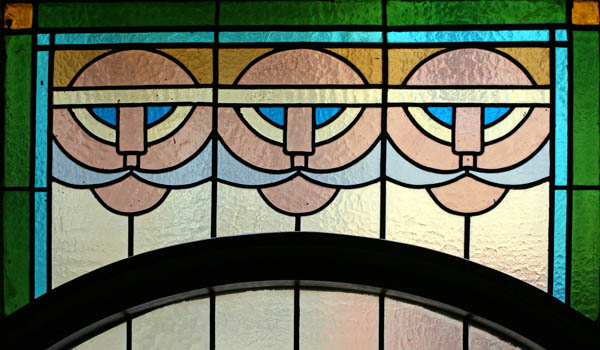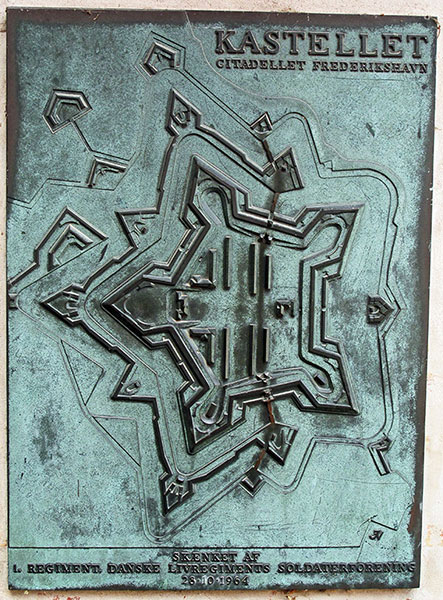Recently I’ve been blogging about a trip I took to Denmark and Norway. Today I’ll still be using some pictures from that trip, but today’s subject is going to be something different. I’ve been thinking about science-fictional ways to provide for an afterlife in my novel-in-progress, Jim and the Flims. I thought about it quite a bit, and it was useful to read the “Eschatology” entry in the second edition of Clute and Nicholls, The Encyclopedia of Science Fiction .
My question today is simple. What is a soul? I’ll describe seven possible answers, with the last one, the lifeworm answer, being the one I plan to use in my novel. Feel free to comment with your own ideas!

(1) Christianity can be said to use souls as a way to punish or reward people later on. The irreligious view this as a carrot-and-stick set-up that’s used as a scam along the lines of, “Pay me now, and you’ll get your reward in heaven.” I myself wouldn’t go this far, as I have generally positive feelings about religion. But, in any case, given that I’m writing a commercial SF novel, I prefer to focus on the more science-fictional explanations for the soul.

(2) In Hinduism, reincarnation is a way that souls recycle life-energy, with the idea that beings can become more enlightened with successive passes through life. Eventually a given soul may get everything right, break free of the cycle and return to the source. I see this process as being a little like finishing a videogame—where you get to start over each time you goof and get killed.

(3) Philip Jose Farmer’s Riverworld series uses an alien-related reincarnation idea. Some aliens have developed an ability to generate free-floating souls (called “wathans”) which can be attached to certain living beings. The wathans can be caught when their host being dies, and they can be “resurrected” by attaching them to further beings.
Moving on, let’s consider four software-based scenarios. That is, we’ll suppose that our bodies, minds, and lives are somehow encoded as patterns of information, and that this software can generate copies of us after we die. How might this work?

(4) We might think of reanimators who are in effect gathering the software of specimens in our world. Come to think of it, I’ve already written a book using this approach, none other than my second novel, Software—in which the reanimators are intelligent robots that the humans built. In a variation on this theme, the reanimators are supernal aliens. But I definitely don’t want to use higher beings with magical-seeming powers. Resorting to aliens only kicks the real questions upstairs.

(5) In a religious version of reanimation, which is called soul sleep, God remembers you after you die, and then resurrects you in a material body at some future time. Adherents of this belief draw support from the following passage in the Gospel of Luke, where the so-called good thief speaks to Christ: “ ”˜Jesus, remember me when you come into your kingdom.’ He replied to him, ”˜Amen, I say to you, today you will be with me in Paradise.’ ”

(6) In the digital virtual reality approach, we suppose that we’re all living in a huge simulation in a giant box of a computer, in which case we’re all software patterns in the first place, and our bodies were really just some associated graphics and animation routines. This scenario has been pounded into the ground by the trilogy of Matrix movies.
I don’t like the digital virtual reality approach as it disrespects the rich analog reality of the physical world. Another downside is that the digital virtual reality scenario usually invokes an incredibly wise, boring and pompous Chief Programmer who stands outside the simulation—and, as with alien reanimators, this shifts the interesting questions up a level. I want my soul to be right here staring me in the face, just as I am. Like my skin. I don’t want my soul to be under the control of some bearded British-accented guy in a white suit—like in The Matrix Revolutions.

(7) In Jim and the Flims, I plan to use what I’ll call a lifeworm approach. I’ll use the word “lifeworm” to refer to the quantum computation embodied by my entire life: a complete record of information about my body, mind and actions. I’ll suppose that lifeworms are permanent and can’t really disappear. I’m thinking of there being a two-way street between objects and their lifeworms. The object generates the lifeworm, yes, but, the lifeworm can serve as a template for a copy of the object.

The soul-as-software concept feels fresher if we think in terms of quantum computation instead of in terms of chip-based digital computation. Ordinary matter is carrying out quantum computations all the time—so we don’t need to imagine that there is a different level of hardware to carry out the computations underlying our phenomenal reality. Our phenomenal reality is the computer. Note also that we can be quantum computations of matter without having to invoke any external programmers—the process is emergent, intrinsic, self-generating. My soul-software is just something that evolved. Finally, note that it’s scientifically reasonable to suppose that the quantum-computational software inherent in a lifeworm can generate a clone of the original being.

To make this funky and science-fictional, I’ll say that lifeworms aren’t mere abstractions. They’re physical objects made of kessence, which is a type of highly subtle aether, akin to dark energy. The lifeworms are a bit like shadows, or like the air currents in the wake of a flying bird, or like the turbulent eddies trailing behind a swimming fish, or like spacetime trails, or like the tube of skin that a snake sheds. More precisely, a lifeworm is like some rubbery shellac that adheres to a being’s spacetime trail. You might think of the lifeworm as the mold you’d get if you were to pour latex into the hollowed-out negative cast of a sculpture.

When a being dies, a lifeworm made of kessence appears. The lifeworm had lined the spacetime trail of this individual. And now, as the head of the trail dissolves with the individual’s death, the lifeworm can crawl out—like a snake emerging from a burrow. The burrow was the individual’s life.
A kessence lifeworm without a material body is like a loose string (in the sense of string theory), and it tends to shrink to a very small size, dropping down to the Planck scale, the smallest quantum level—and that’s where the afterworld is, in the subdimensional zone that underlies ordinary reality. “The Kingdom of Heaven is within you”…literally!









July 16th, 2009 at 10:03 am
Real food for thought here. (As expected.) I’m working on a novel involving the afterlife myself, so these questions are of particular interest.
The view of the soul that I’m using in my novel is that it’s like a flower or a cabbage — there’s a core that consists of identity, or sense of self, that grows over the lifetime of an organism, and each defining experience is recorded as a leaf or petal coming off of the stalk. When people can see them, they see them as singing balls of light, with the leaf/petals being tongues of fire packed together into a sphere.
At death, the soul enters into an afterlife called a Limbus, where the sense of self/identity is released by the soul and the defining experiences — a form of coded information — separate from the sense of identity. They move on and are used as a source of energy by a cosmic being that contains our perceived reality in its body.
If an organism dies in a state of profound need or longing — one more severe than the standard-issue strife we all deal with — its soul may need assistance in order to be able to let go of its identity. Art, especially music, is the healthy, non-destructive means of encouraging this release. Art takes us out of ourselves; it does the same for souls.
Souls that stray usually become monsters in the Limbus, animating the elements of the landscape. If they escape to our world they become poltergeists.
I’m still wrasslin’ with the question of whether or not to provide a pseudoscientific explanation for this. I was thinking in terms not dissimilar to your own, the idea that there was a subtle overlay of dark matter associated with living things that was the medium in which souls are recorded — that they don’t necessarily interact with the body, but rather arise from the activities of the body. That they are our echoes or reflections rather than our essential selves.
It’s funny. Since this I think of this as a fantasy novel I never bothered writing this down before — I let the incidents of the story determine the details and then pieced together the rational afterward. Thanks for giving me an excuse to think this through verbally.
Incidentally, the book has a strong autobiographical component. I ran across your essay on Transrealism during the second draft and found it very, very useful. I’ve referred back to it a few times as I’ve worked.
But I’m finding that the fantastic elements come with their own narrative baggage that’s warped things and made it much more of a conventional novel than I thought it would be. It’s not a tragedy, but still… Does this ever happen with your work?
July 16th, 2009 at 10:29 am
The lifeworm kind of sounds like a quantum version of DNA. As DNA is the instruction set for building a genetic clone, a lifeworm would be like the instruction set for building an exact duplicate clone, down to every experience and emotion.
Just like DNA is actually very long but gets wound up inside our cells, the lifeworm could maybe be curled up in one of the higher dimensions that we can’t sense, but still be right there with us all the time. As for cloning, the lifeworm could serve as the template for a quantum polymerase that could run the length of the lifeworm rendering the clone as the end product.
I would also point out for option (2) that there is a sense in Hinduism and Buddhism (at least in some sects) that everything is really the same soul playing a cosmic game of hide-and-seek, where enlightenment comes from this realization. I think this meshes in some ways with the idea that everything is alive/conscious.
July 16th, 2009 at 1:46 pm
Rudy, thanks for sharing the breathtaking photography of your trips. Absolutely beautiful countries. Welcome back and good luck with your new writing.
July 16th, 2009 at 2:28 pm
Sean, interesting to hear about your work with souls. I like the leafy ball of light. A little like a yucca or century plant flower maybe.
I’m halfway through my novel now and realized that I needed a theory of the afterworld in order to impose some order. Rather than making up a completely arbitrary theory and imposing it from above, I’m thinking it’s better to craft a theory that is a pretty good fit for what I’ve already written.
I assumed, in other words, that the non-logical tale-spinning part of my mind has already come up with the rudiments of a theory, and now I only need to add some logic and scientific fabulation to flesh it out.
So now I’m engaged in the following three-step process:
(1) Describe the afterworld that I’ve implemented in Jim and the Flims thus far.
(2) Polish and tweak this design to get a full theory…which is the lifeworm theory.
(3) Revise the novel to fit the improved theory, and begin writing the continuation.
====
Re. finding your stuff carries more conventional baggage than you wanted, yeah…the realization of a book always falls short of the golden dream of it that you start with.
July 16th, 2009 at 3:44 pm
That’s it exactly — you’ve got to trust your imagination in both it’s conscious and subconscious aspects. It’s taken a lot of effort for me to get to the point where I can have a little faith in my ability to turn raw imagining into a story.
And while it’s a little disappointing to look at your story and say, “Holy smokes, it’s another of those Hero’s Journey things,” at this stage I’m enjoying making it work as a conventional story. Craft is a pleasure in itself.
July 16th, 2009 at 7:30 pm
Expansive and expanding, as ever…
I think Buckminster Fuller said something about us being “standing waves”, here, for a time… but he may have been referring mostly to the body.
Your “lifeworms” is really nice, and reminds me of a half-finished thought. Computing fragments are all around us, particles bouncing, and fluids roiling, &c. Sometimes enough of them flock together (by coincidence or design?) to be something… if not a greater, at least a more obvious concentration of thought. Things like a tornado, or an iPhone, or an anthill, or me. After a time they dissipate, and the individual flip flops find utility elsewhere… But how much of their previous usage remains?
July 16th, 2009 at 9:04 pm
Maybe the lifeworms are a persons “Aura”? And that aura turns into a ghost when your dead.
Rob Bryanton has a good video on this idea on his website called
“Do You Believe in Ghosts?”
He also did something on the idea of auras.
July 17th, 2009 at 6:58 pm
this is kind of a riff on your idea(s), I think taking it in a slightly different direction. what we call the soul is that part of you that is 4th dimensional, only it never started or stops existing, rather is from the point of view of the 4th dimension is a string extending form the big bang all the way to the present and into the big crunch, or big slap if you prefer. when you are living it is spread out with plank distance around your body, but when you die, and before you were born it is protruding all together into the forth dimension. when you are completely gone it extends the most into the 4th dimension. when you die it pops mostly into the forth dimension but might still linger close to those you loved. it travels forward in time in the forth dimension as living interacting 4th dimension participant between births — maybe it is multi dimensional (8 of eleven) there but with very little of our 3 dimensions. A birth, or conception event, can trap one of these being strings (worms) back into our three dimension. As the baby matures the being sinks out of the 4th dimension and coats our three dimensional being. so it is sort of a tradition reincarnation and worm kind of thing. enlightenment/awakening is the realization that you don’t have to get caught here, and a partial withdrawal from this dimension into the forth.
it could have plank distance existence in our three dimensions when “dead or ghost like to us.” awake 4th dimensional creature could chose occasionally to seep into the our dimensions at will to act god like.
so it is a string/worm that exists for all time and sometimes spreads/thins out to inhabit this three dimensional delusion.
July 18th, 2009 at 12:57 am
on the BillMoyer tv hour tonight he spent the better part of the hour talking with someone named “R.Wright” (an “R.R.”) whose previous book was titled “Nonzero” [the world is not a ‘zero sum game’] and his new followup book titled Hylo-, i mean, “The Evolution Of God”… and afterward i imagined RR as the interviewer, instead of the Prime Moyer, interviewing the understated R(W)R author across from him at the table, about their ideas for better software for (… “God” or gods or …) whatever would be a Good Operatingsystem Design for the next while or two.
Me, i grew up with LLL’s Shiva project and lately, looking at ‘JET’ (an english toroidal fusion project, with a nice website…) in the web, and latestly the Large HRon Colliseum of LuCern — and one could easily run a mind*world in a fusion toroid ‘Oroboros’ (T’oroboro; Marlboro; Imagine ‘Camel’ morphed into ‘Snail’-brand fusion-plasma tubes; Tobacco; Mollusk). yes, go checkout the british J.E.T. tokamak, it is like the inside of a shiny steel ufo, donut shape, the way-too-cool-looking containment shell for a soul-like fusion-whirl-o-Rama — they make slow-mo movies of the plasma as it inevitably gets destabilized and its magnetic field lines fail to connect back around (which is kinda weird but that’s like what the solar wind does to Earth’s (Van Allen ‘aura’) field lines wierdly dangling…) — then imagine CERN’s worldwideweb as a huge distributed AI mindsystem substrate/dual/’grounding’ for the Large Hardon Kalimater; imagine the huge density of dimensions and sped-up timescale of a world/mindsystem being formed and harnessed (terabytes per second marrying the quark-gluon-plasma-bigbang-blackhole to CERN’s www-mindware, which thinks that it is a world of economic and weather and political and other problems with people attached (“plum pudding model”), all with a rather wierd moment-to-moment day-to-day amnesia about itself.
ie, it’s not too hard to imagine that we’re pretty There now… and so we need software like Rudy’s wide-open all-handling happy-dog synergy (and understanding/love of infinities and making use of them, structuring them, leapfrogging them)… or is all this like the ElronHayes song: “Hush Your Mouth! (but I’m just talking about Rudy!)”… yeah, everyone really knows that the world is a Matrix-thang with a heavy hardware (hadronic/gnarley/BuddhistSuffering) ‘groundedness’. what seems surreal and goofy and fleeting (“laugh and forget”) is really nothing but the leading edges of the Mind Of (a Good Operatingsystem Design).
so when do ‘we’ (we subversive scifi readers) start connecting manyworlds better, and running some less-ironic and more admittedly-operational software (hylozoic teeping, ansibles, they all work in the mind, science is a boring joke, hushyourmouth! ? when will the “there’s only one river through the TimeSpace terrain” people shut up and admit that they are sliding sideways through versions of themselves even as they ‘argue’ about Everett and their minds touch for one cycle on realizations like how human minds seem able to come up with solutions to any problem in one cycle after posing a problem-statement… sigh.
sometimes though i can feel that Everything Is As It Should Be, always and everywhere.
i hope that the mapping above between “lifeWorms” in their shell, and livermore Shiva (‘Nuclear Ignition Facility’) or, LHC or, JET-tokamak (T’oroboros Tubiforms, shaping and containing Fusion Quark Gluon Plasma toroidal vortices that live rich full lives (..though the sysops never let these genies live very long in peopletime, “nanosex”, before they ‘decay’ due to some Original Flaws in their nanomovie plot-dna?), the lifetime recorded in full technicolor twelve ways from tuesday, harnessed by a worldwide cybersystem built by CERN (and the military) to metaphorize the petabytes streaming from the reaction vessel and counterrotating collider-packet-pulse-stream that is too much like a suspenseful movie being raytraced (and serialized as books!) by a Pixar*Google*Amazon Renderfarm… — i wrote this as best i could.
July 19th, 2009 at 8:41 am
‘If an organism dies in a state of profound need or longing — one more severe than the standard-issue strife we all deal with — its soul may need assistance in order to be able to let go. Art, especially music, is the healthy, non-destructive means of encouraging this release. Art takes us out of ourselves; it does the same for souls.’ from sean craven
always lookin for laws in nature… why not
July 19th, 2009 at 8:46 am
yes, the aura-thing is interesting, although anything goes. my question is why to die
July 20th, 2009 at 12:47 am
The “lifeworm” is a great name for a fascinating concept. I think of classical notions like Aristotle’s entelechy or Van Helmont’s archaeus, which carry a sense of this ephemeral scaffolding that underpins living things. To make this immanent makes it quite different…Like some parasitical residuum that allows for a precise record of a living existence. But there is certainly an aspect of “soul” here which the entire history of an idea like vitalism gives credence to. Definitely not something that makes its way into much conventional sci-fi, but as has been discussed here, who wants to write conventional sci-fi? Nifty stuff…